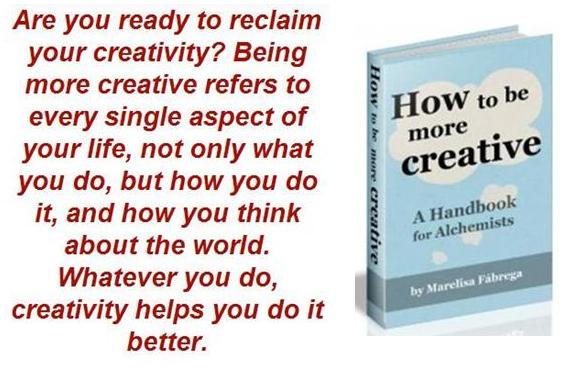 Many of us have established “being happy” as one of our main goals in life. However, our own self-talk often interferes with our ability to achieve this goal.
Many of us have established “being happy” as one of our main goals in life. However, our own self-talk often interferes with our ability to achieve this goal.
We express our beliefs through our self-talk, and these beliefs can be rational or irrational. While rational beliefs are realistic, irrational beliefs are those that don’t accurately represent the world. There are several categories of irrational beliefs, and we’ve all been guilty of having thoughts that fall into one or more of these categories at some point or another.
One of the best ways to increase our happiness is to replace “irrational” self-talk with more realistic and adaptive self-talk. This post will explain a great tool for doing this; it’s called Rational Emotive Behavior Therapy.
Rational Emotive Behavior Therapy (REBT) In a Nutshell
“Men are disturbed not by things, but by the views which they take of them.” – Epictetus
In the mid-1950s, Albert Ellis–an American psychologist– developed a form of psychotherapy which today is known as Rational Emotive Behavior Therapy (REBT). The philosophical basis of REBT is the principle that a person is not affected emotionally by the events that take place in his or her life, but rather by his or her interpretation of these outside events. In short, our thoughts cause our emotions.
Keep reading to discover how you can begin to apply REBT in your own life in order to increase your happiness.
The ABC Model
Albert Ellis created the ABC Model to demonstrate the link between our beliefs, and our feelings and behaviors. Here’s how the ABC Model works:
- A – Activating Event (Something happens which is the activating event, or the trigger).
- B – Beliefs (You have certain thoughts about the event that occurred; your thoughts are based on your beliefs.)
- C – Consequences (As a consequence of the thoughts that you have about the event that took place, you feel certain emotions. These emotions lead you to take some action.)
The ABC Model highlights the fact that feeling an emotional disturbance at point “C” only partially stems from the activating event at point “A”. The real cause of any dysfunctional emotions that you may experience–such as anger, sadness, frustration, anxiety, and so on–, are your own irrational beliefs at point “B”.
Here’s an example:
- A woman that you met recently at a party, Sarah, passes by you as you walk down the street. You call out a greeting, but she just walks on by.
- You have the following thought: “She’s ignoring me; she must not have liked me. I must not be very likable.”
- You feel hurt, sad, and resentful, and you go home and sulk.
Of course, the ABC model doesn’t just end there. The next step is to begin to identify your irrational, self-defeating beliefs–which are rigid, extreme, unrealistic, illogical and absolutist–, and then question and dispute them. In our example of Sarah, you could ask yourself questions such as the following:
- Am I sure that Sarah saw me? Could it be that she was distracted?
- Sarah was nice to me at the party, so what evidence do I really have that she doesn’t like me?
- What if she was just having a bad day?
- Even if it’s true that Sarah doesn’t like me, is that really such a big deal?
- If Sarah doesn’t like me, does that really mean that nobody likes me?
- Is it really imperative that everyone like me?
The last step is to replace your irrational beliefs with more rational and self-helping ones. Here are some examples:
- Sarah must not have seen me.
- If Sarah did ignore me, that’s a reflection of her need to work on her social skills; it says nothing about me.
- We all have bad days; I should give Sarah the benefit of the doubt.
- Not everyone is going to like me, and I’m OK with that. There are plenty of people who do like me.
Basically, you need to develop a more rational and self-constructive philosophy of yourself, others, and the world. By doing this, you can alter your emotional responses to what happens to you and respond to the world around you in a more life-serving and adaptive way. And this will go a long way toward increasing your happiness.
The Three Basic Musts
According to Albert Ellis, the beliefs that upset us are all variations of three common irrational beliefs. These three beliefs are the following:
Belief about yourself: “I absolutely MUST, under practically all conditions and at all times, perform well (or outstandingly well) and win the approval (or complete love) of significant others. If I fail in these important-and sacred-respects, that is awful and I am a bad, incompetent, unworthy person, who will probably always fail and deserves to suffer.”
- This belief shows a lack of self-acceptance.
- It places unrealistic expectations on oneself.
- It shows an over-concern with the opinion of others.
- It equates self-worth with achievement.
Belief about others: “Other people with whom I relate or associate, absolutely MUST, under practically all conditions and at all times, treat me nicely, considerately and fairly. Otherwise, it is terrible and they are rotten, bad, unworthy people who will always treat me badly and do not deserve a good life and should be severely punished for acting so abominably to me.”
- This belief is non-accepting of human fallibility.
- It assumes that you are at the center of the universe and everyone else must cater to your needs.
- It assumes that you have the final decision on what’s right and what’s wrong.
Belief about the world: “The conditions under which I live absolutely MUST, at practically all times, be favorable, safe, hassle-free, and quickly and easily enjoyable, and if they are not that way it’s awful and horrible and I can’t bear it. I can’t ever enjoy myself at all. My life is impossible and hardly worth living.”
- This belief is inflexible and unrealistic.
- It underestimates your ability to cope with adversity.
- The underlying premise is that having a trouble-free life is your right.
These three beliefs sound ludicrous and completely nonsensical. However, the next time you find yourself feeling upset, monitor your own thinking and see if you can detect any of these rigid and extreme beliefs lurking in the back of your thoughts. You’ll probably be surprised by what you discover.
Ten Types of Irrational Beliefs
The three musts explained above can be fleshed out into the following ten types of irrational beliefs:
1. All-Or-Nothing Thinking – You see things in black-and-white. If your performance falls short of perfect, you see yourself as a total failure. As an illustration, an “A” student gets a “B” on an exam, and she tells herself that this is proof that she’s not all that smart after all.
2. Overgeneralization – You see a single negative event as a never-ending pattern of defeat. If your girlfriend breaks up with you, you tell yourself that you’ll be alone for the rest of your life.
3. Mental Filter – You pick out a single negative defeat and dwell on it exclusively so that your vision of reality becomes distorted.
4. Disqualifying the positive – You dismiss positive experiences by insisting they “don’t count” for some reason or other.
5. Jumping to conclusions – You make a negative interpretation even though there are no definite facts that convincingly support your conclusion. In turn, this can lead to two different errors in thinking: mind reading and the fortune teller error.
- Mind Reading. You arbitrarily assign intent to the actions of others, as if you always know why others do what they do.
- The Fortune Teller Error. You anticipate that things will turn out badly, and you’re convinced that your prediction will come to pass.
6. Magnification (Catastrophizing) or Minimization– You exaggerate the importance of things (such as someone else’s achievement), or you inappropriately shrink things until they appear tiny (such as your own desirable qualities).
7. Emotional Reasoning – You assume that your negative emotions necessarily reflect the way things really are: “I feel it, therefore it must be true.”
8. Should Statements – Should statements don’t cut anyone any slack. It doesn’t matter what you do, or what others do, there’s always more that should be done.
9. Labeling and Mislabeling – This is an extreme form of overgeneralization. Instead of describing your error, you attach a negative label to yourself: “I made a mistake in the presentation, which means that I’m a loser.” When you’re unhappy with someone else’s behavior, you attach a negative label to him or her: “He didn’t return my phone call; he’s an unfeeling jerk.”
10. Personalization – You see yourself as the cause of some negative external event which in fact you were not primarily responsible for.
Questions to Ask Yourself
Whenever you feel upset and you want to determine whether an irrational belief is at fault, ask yourself the following questions:
- Is this really true?
- Am I jumping to conclusions?
- What evidence am I basing my conclusions on?
- Am I exaggerating or over-emphasizing a negative aspect of the situation?
- Am I catastrophizing? Am I making things to be a lot worse than they really are?
- How do I know it will happen?
- So what if it happens?
- Is it to my advantage to continue looking at things in this way?
- Is there another way to look at this situation?
Conclusion
If there’s a situation that’s upsetting you, apply REBT by following these steps:
- Write down what the situation is.
- Go through the 10 patterns of distorted thinking listed above and see if you’re applying any of them.
- If so, ask yourself if there’s a better way to look at the situation.
- As a fourth step, ask yourself if there’s an even better way to look at it. Then, write down your new interpretation of the event. Keep repeating this new interpretation to yourself in order to fully integrate it into your subconscious.
REBT is a great tool for increasing your happiness; and all you need to do in order to apply it is to modify your own thinking. Apply REBT right away and start living your best life.



Related Posts:
- 5 Life Lessons From Motivation Mega-Star Jim Rohn
- 15 Extremely Useful Things You Can Do In 15 Minutes
- An 18 Minute Plan That Will Make Your Productivity Soar
- Productivity Tip: Think Small
Did you enjoy this article? Subscribe to “Daring to Live Fully” by RSS or by email, and get free updates.








 Marelisa Fabrega is a lawyer and entrepreneur. She holds a Bachelor of Science in Business Administration from Georgetown University in Washington, D.C., as well as a Juris Doctor from the Georgetown University Law Center. You can learn more about her
Marelisa Fabrega is a lawyer and entrepreneur. She holds a Bachelor of Science in Business Administration from Georgetown University in Washington, D.C., as well as a Juris Doctor from the Georgetown University Law Center. You can learn more about her 





